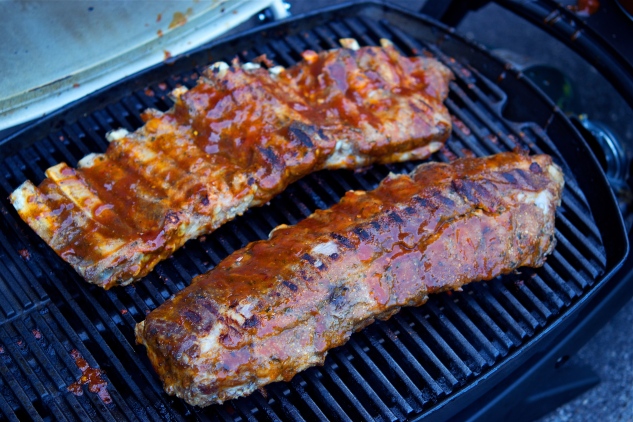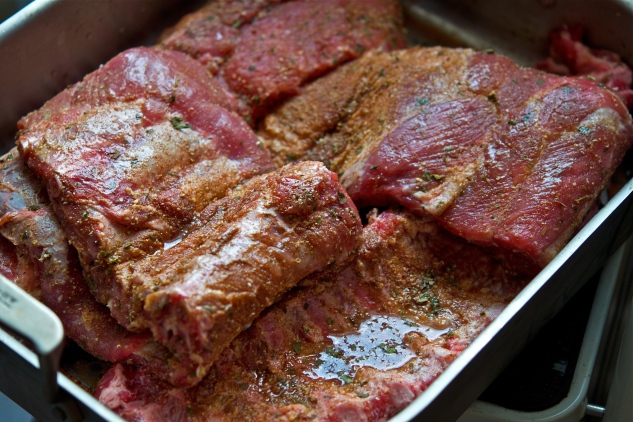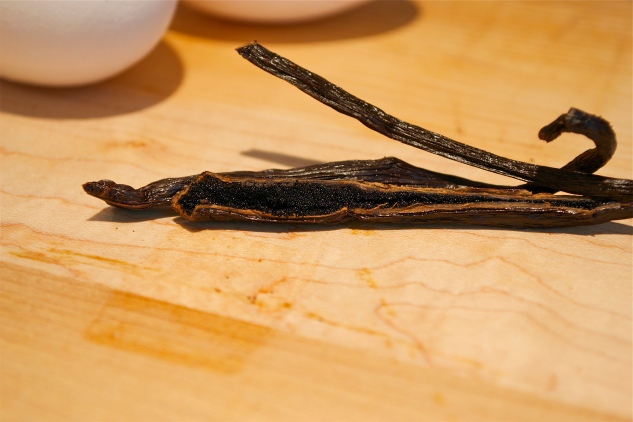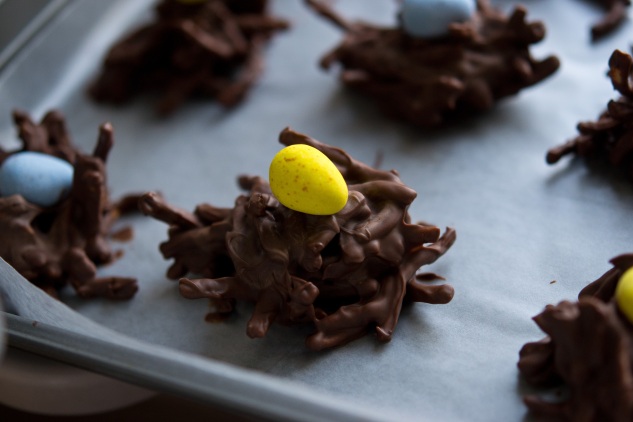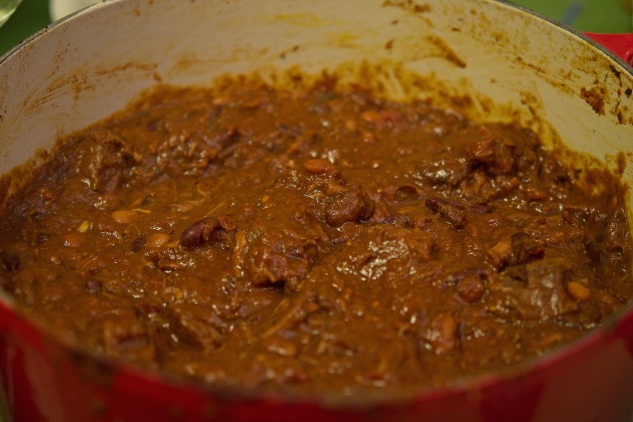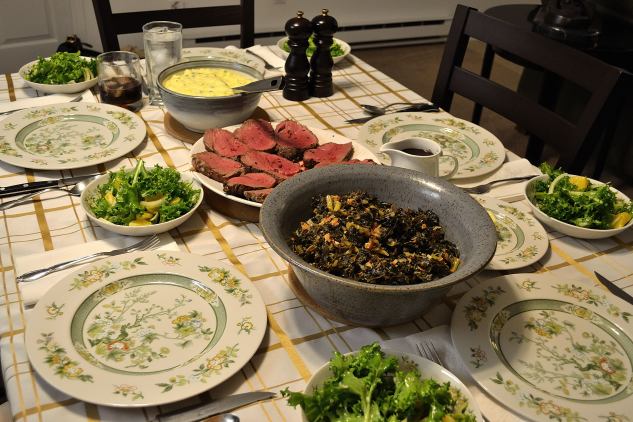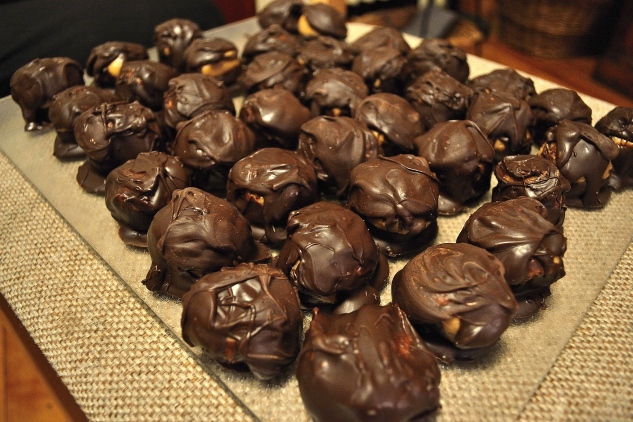 I am a total sucker for food magazines – the too-good-to-be-true photography, elaborated by mouth-watering tales and anecdotes, with star-studded chef contributions…there’s always at least one dish that catches my eye, and receives a “must-make-now” bookmark. I was sifting through some old magazines and happened across a gorgeous galette. This term is used to describe a variety of free-form pastries and cakes found in French cuisine, and is often typified as a “rustic” creation. In reality, most galettes are far from rustic, as the beauty of this dessert is its imperfection. So when I was asked to make a summery dessert for a cookout with my boyfriend’s family, this Ginger Peach and Cherry Galette was my response…and it was truly stunning.
I am a total sucker for food magazines – the too-good-to-be-true photography, elaborated by mouth-watering tales and anecdotes, with star-studded chef contributions…there’s always at least one dish that catches my eye, and receives a “must-make-now” bookmark. I was sifting through some old magazines and happened across a gorgeous galette. This term is used to describe a variety of free-form pastries and cakes found in French cuisine, and is often typified as a “rustic” creation. In reality, most galettes are far from rustic, as the beauty of this dessert is its imperfection. So when I was asked to make a summery dessert for a cookout with my boyfriend’s family, this Ginger Peach and Cherry Galette was my response…and it was truly stunning.
 This galette calls for a sweet pâte brisée (or a pastry dough), which incorporates a touch more sugar and eggs than your standard crust. The eggs (inevitably) make for a very sticky dough, so you will want to take that into account when rolling and transferring the pastry to a pan. The texture is also softer than your typical pastry dough, and comes together in much less time. Even so, it is still important to keep your ingredients as cold as possible during the preparation (a cardinal rule for ALL doughs).
This galette calls for a sweet pâte brisée (or a pastry dough), which incorporates a touch more sugar and eggs than your standard crust. The eggs (inevitably) make for a very sticky dough, so you will want to take that into account when rolling and transferring the pastry to a pan. The texture is also softer than your typical pastry dough, and comes together in much less time. Even so, it is still important to keep your ingredients as cold as possible during the preparation (a cardinal rule for ALL doughs).
 The original recipe only called for peaches…I just happened to have poor luck at the market, so 2 of my 4 peaches were rotten. Thankfully I had a bag of fresh cherries in the fridge that I had been become quite addicted to, so this was the perfect solution for both the galette and my self control. The result was a colorful, fresh, and stunning dessert – you can use any fruit you like (except for watermelon or cantaloupe…that would be odd), and even change up the spices. Click HERE for the recipe to this beautiful summer treat!
The original recipe only called for peaches…I just happened to have poor luck at the market, so 2 of my 4 peaches were rotten. Thankfully I had a bag of fresh cherries in the fridge that I had been become quite addicted to, so this was the perfect solution for both the galette and my self control. The result was a colorful, fresh, and stunning dessert – you can use any fruit you like (except for watermelon or cantaloupe…that would be odd), and even change up the spices. Click HERE for the recipe to this beautiful summer treat!
 Edible brilliance is the goal of any chef, and placing a work of art upon a plate after hours of prep can feel like an immense accomplishment. I thought a foray with “color” would be suitable for this musical pairing, which led me to a French composer whose style is notably playful, light, and full of tonal vibrancy: Jean Françaix. Having been born into a musical family, Françaix’s talent was fostered at an early age. His studies with Nadia Boulanger and Isidore Philipp led to a prolific career, and his music consequently flourished – Maurice Ravel had said of the young Françaix
Edible brilliance is the goal of any chef, and placing a work of art upon a plate after hours of prep can feel like an immense accomplishment. I thought a foray with “color” would be suitable for this musical pairing, which led me to a French composer whose style is notably playful, light, and full of tonal vibrancy: Jean Françaix. Having been born into a musical family, Françaix’s talent was fostered at an early age. His studies with Nadia Boulanger and Isidore Philipp led to a prolific career, and his music consequently flourished – Maurice Ravel had said of the young Françaix
“Among the child’s gifts I observe above all the most fruitful an artist can possess, that of curiosity: you must not stifle these precious gifts now or ever, or risk letting this young sensibility wither.”
The piece I chose for this pairing is Françaix’s Concertino pour piano et orchestre – composed in 1932, the work is less than 10 minutes in length, and is true to the composer’s neoclassical and witty style. The recording included below is by the composer himself (he often performed his own works for piano). Like this galette, the colors and texture are quite visceral. It’s a lovely little piece, and I hope you enjoy it!
Sources Cited:
“Jean Françaix,” Wikipedia.com








